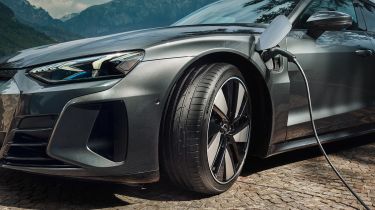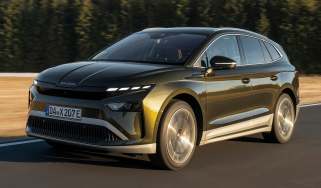EV tyres - what you need to know
Hankook’s iON range of tyres are made specifically for electric vehicles – here’s how they improve performance, economy and refinement
When it’s time to change the tyres on your electric vehicle, it’s now possible to switch to a set of EV-specific tyres. You might wonder – just how different can such a thing be?
The answer is – very. It’s all down to the anatomy of an electric car, which is usually quite different from a conventionally-powered vehicle. For one thing, a lower rolling resistance is vital, helping increase an EV’s efficiency and thus its range. Meanwhile, tyre noise is of much greater concern. As there’s no engine sound to compete with, a tyre that produces less noise is vital for the sake of driver and passenger comfort on longer journeys.
And finally, EVs are not only able to generate significant torque outputs, but also deliver the full torque figure instantaneously, increasing the load on the tyre.
What makes Hankook iON tyres different?
Hankook iON-series summer and winter tyres meet these demands through numerous innovative measures. For instance, the carcass features an EV-specific shape or ‘contour’, which helps enhance handling, even with the additional weight of an EV. Looking closer, there are sipes in a three-dimensional zig-zag pattern, improving grip in wet and wintry conditions, and the ‘curing’ process during the tyre’s manufacture has been specially optimised for lower rolling resistance.
The tyre itself is made from Hankook’s ‘EVolution’ compound, featuring a high concentration of silica for improved grip and durability. The use of natural oils, which are more environmentally friendly, contributes to a weight reduction of up to one kilogram per tyre, further aiding rolling resistance. Another way the iON improves efficiency is through its aerodynamic tread.
The tyre pattern is designed to reduce air resistance, decreasing drag, and Hankook’s engineers have even ensured the lettering on the sidewall is as slippery as possible. Unwanted noise is combatted on two fronts. Firstly, the inner grooves are knurled to reduce tread noise, and secondly, there’s a strip of insulation running around the inner circumference of the tyre, combating cavity noise.
All of this contributed to the Ventus Ion S and SX achieving rare ‘Triple A’ EU ratings, with top scores in all three categories – fuel efficiency, wet braking, and noise. [1]
Developed through AI
Designing the ideal EV tyre usually involves balancing competing ideals – handling vs lower rolling resistance, grip vs wear, and noise vs wet performance. For the iON series, Hankook found an ideal balance for all of these elements using artificial intelligence. Virtual Optimisation Technology uses an algorithm to simulate a great deal of the tyre development process, improving the accuracy of the results.
1. Depending on tyre size
Find a car with the experts





